
This tribute concerns the selection of Georgios Zongolopoulos as Honored Artist at the 6th Art-Thessaloniki International Fair. The inthespot interviews took place in a relaxed atmosphere as we had breakfast at the ABC hotel, from the artist Alexandra Tsitsinda, to Nikos Theodoridis, President of the George Zongolopoulos Foundation, Katerina Koskina, art historian and curator of the George Zongolopoulos exhibition and Pantelis Tsatsis, Art Director of the 6th Art-Thessaloniki International Fair.
Alexandra Tsitsida: Mr. Theodoridis, as nephew of Mr. Zongolopoulos and President of the George Zongolopoulos foundation, you can tell us a few words about his work;
Nikos Theodoridis: I am not an expert to talk about the art of Zongolopoulos, although I really love it, but I will talk about Zongolopoulos as I experienced him and as I saw him with my childhood eyes but also later with the eyes of a mature man. Of course, what I will tell you is not written anywhere, but the information I have directly from Zongolopoulos himself. For example, his identity says that he was born in 1903, but in 2003, specifically in August 2003, he confided to me that the next month, that is, in September 2003, he would turn 102, that is, he died 102 years and 8 months because he died in May 2004. So then comes out what he also told me and which is not written that he was a soldier for five years. That is, he must have been recruited around 1918 when Greece entered the First World War and demobilized after the Asia Minor Disaster in 1922. Zongolopoulos, because he participated, fortunately not in battles, in the war and was five years a soldier, was by nature but also by conviction a pacifist. He was also a very intelligent man. Imagine that with the 100 booked, he remembered all his phone book by heart. His mind was truly amazing and that’s why he was creative until the end of his life. The last two works he created “Pentacyclo” and “Eirana” which is the last made them at the age of 100 years. He was constantly thinking and creating. He was very fond of puns as well as he was fond of irony, but not irony in the bad sense of rudeness and against people, for he was a most noble man, so he liked irony related to concepts and situations. From this comes his allegory in some of his works.
AT: what in your opinion are the works that characterize him for his critical thinking towards the events of that time;
NTH: his first work is “Ballet de Justice” where he has a court gate from which he imagined judges in black robes, white wigs and black tights coming out from inside dancing. This gate, which instead of “Palais de Justice” he calls the “Ballet de Justice”, is the parody of the Nuremberg trial, which is why in the background of this gate there are small barrels that write on Zyclon b, as you will remember, is the poison with which the Nazis killed the Jews in the showers.
His second work is a work with a lens that calls it “the gifts” and consists of boxes and a very large magnifying glass. When we see the boxes enlarged by the lens we find that they are empty. These boxes which the artist calls “the gifts” are the American aid that the Greeks got after the Second World War.
The third is the first umbrella he made. The umbrella as a subject, was originally worked by his wife Eleni Zongolopoulos, who was an excellent painter and companion for all the years he lived, because she died much earlier than him. Zongolopoulos inspired the umbrella from a painting of his wife. So this umbrella, which was a classic stainless steel mesh umbrella, he made it with a hole in the middle and when I asked him ” Why Have you made this hole in the middle?” he says to me “I was listening this morning on the radio that Greece will be saved from the nuclear threat because we are under the umbrella of NATO”. Then the umbrella became in a way the symbol of Zongolopoulos and although he has done amazing works both before and after, the umbrellas are what characterize him.
Also, another symbolic work of his which is really amazing and it is a pity that it was not placed where it should be, is “Gorgopotamos”. In 1985 he had taken part in a competition announced by the Ministry of culture to become a monument in Gorgopotamos for the blowing up of the bridge. So, using the materials that make a bridge, IE iron bars, he made with iron bars vertical and horizontal a sphere in a cube which unites together wanting to show that the two opposing political factions in Greece, Edes on the one hand and ELAs on the other, United to blow up the bridge of Gorgopotamos. In the middle there are hanging signs that are also symbolic to mark the beginning of the Resistance of the Greeks against the Nazis.
AT: how did you decide to come here to Thessaloniki because it is a difficult task to transfer all this volume of works of Zongolopoulos and show it for four-five days at the 6th Art-Thessaloniki International Fair;
NTH: Zongolopoulos is connected to Thessaloniki. Athens had rejected his first modern work which was “Poseidon”. Zongolopoulos had won the first prize in 1958 for the formation of Omonia Square and from his work only the Jets entered while his sculpture never entered, probably because it was considered to be too modern. Thessaloniki, however, in 1966 accepted to be placed at the northern entrance of D.E.I. a very advanced and modern project that even stirred up the world at the time. This work is “Cor-ten” and its title refers to the material which he used to make this work. It is a mixture of metal which over time shows a dark red-brown color that protects the metal from corrosion.
When Pantelis Tsatsis asked us to participate with some works by Zongolopoulos and to be the guest of honor at this year’s 6th Art-Thessaloniki International Fair, thinking that Zongolopoulos can not have a presentation in Thessaloniki with a few works, we asked him to give us a bigger space. So he and I undertook this very great undertaking. And I say this because it is a great work in volume. Also for the first time in Thessaloniki are presented paintings by Zongolopoulos.
I would say he was a Renaissance artist because he was an architect, he was a painter, he was also a sculptor. He said he always remembers himself as a child painting like a grown-up. He also said,”I am a better painter than I am a sculptor.” Zongolopoulos, working for about ten years at the Ministry of Education, Designed 42 school buildings, some of which were built with the signature of his fellow architects, while at the end he was given the right to sign it himself without having a diploma. Fellow architects of the Ministry of Education admitted his contribution to architecture and he has also designed a dozen churches at the same time. As a result of all that Zongolopoulos has offered to Thessaloniki all this time but also the bond he has created with the city, it was not a difficult decision it was easy I would say. With great joy and enthusiasm we accepted the invitation of Mr. Tsatsis to participate Zongolopoulos as Honored Artist and to show his works that Thessaloniki did not know and especially the paintings that almost no one knew in Greece. Thus, Thessaloniki honored Zongolopoulos and Zongolopoulos honored Thessaloniki on the occasion of the 6th edition of the Art-Thessaloniki International Fair.
AT: Thank you very much!
NTH: You’re welcome!
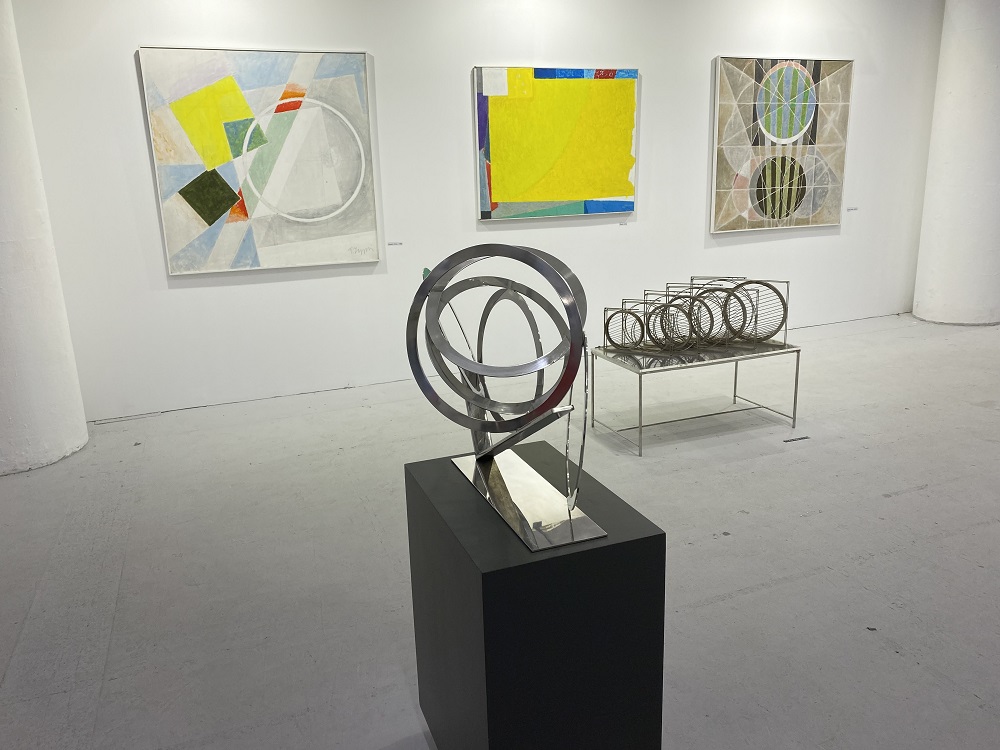
Alexandra Tsitsinda: we know that George Zongolopoulos has established a long and endless relationship with Thessaloniki.Tell us a little about his relationship with Thessaloniki.
Katerina Koskina: it is the first exhibition of George Zongolopoulos that takes place in Thessaloniki after his death in 2004, and the collaboration with the Zongolopoulos Foundation, which he founded, is self-evident. C. Zongolopoulos continues to maintain a very close relationship with the city of Thessaloniki. Besides, in Thessaloniki there are several works of Zongolopoulos, in Momis, in collections and in the public space, two of them belong for historical, artistic and social reasons, to his most important works. The first is” Cor-ten”, a 17-meter-high sculpture that abstractly represents the victory of Samothrace and was placed outside the main entrance of Tif-Helexpo, in Fountain Square in 1966, which caused a lot of fuss when it was inaugurated, because it was considered too modern and divided the world. He received reviews with pros and cons, in the press. Today, I think Zongolopoulos has been vindicated. The second project, which recently became a landmark, but also a trademark of Thessaloniki is The” Umbrellas ” of Nea Paralia. Of course there are others, such as “the three circles”, also on the beach so we understand that Zongolopoulos has a stable and meaningful relationship with the city of Thessaloniki all this time.
AT: What is your contribution as curator of this exhibition;
KK: my contribution as curator of the exhibition was to select works in order to demonstrate through a period of about 4 decades, -although Zongolopoulos, living for more than a century, had a much longer journey-the consistency and consistency in his work, whether it be sculptural works and models or paintings. It is worth noting that the 10 paintings presented in 6thart-Thessaloniki are rarely presented to the public and some are the first time they are presented. Because Zongolopoulos is known as a sculptor, the public’s attention is focused more on his sculptural work than on the painting. However, when you see them together then you really realize the coherence in the research and the work he has done as a whole in the fields of sculpture in studios, countryside and Urban Landscape, Architecture and painting, because even his two-dimensional paintings are essentially studies and have “sculptural”, not subordinate to sculptures, since they negotiate issues of space, emptiness and complete .
AT: Zongolopoulos ‘ contribution to the acquaintance of the Greek public with modern art was unparalleled, as is also the fact that he was an artist who constantly evolved changing styles in his work. How Zongolopoulos makes his way through his strict geometric forms to kinetic art and the transparency of materials;
KK: Zongolopoulos worked for many years in the logic and style of modernism and even in the 30s he participated with many other architects, writers, musicians and visual artists in shaping the wave of modernism in Greece.
Although he was not an architect, he has worked a lot as an architect in the Greek state, having designed many schools, most of which still exist today.It does not matter if he signed, but he was engaged in the implementation of rationalistic architecture. The design of the commentaries is related to his sculptures, especially those that have a Cubist structure. Take for example the work” Cor-ten “or the work” Olive ” of the exhibition, although chronologically they were created later. This lasted until the 1970s. From the 70s onwards, mainly during the 80s, Zongolopoulos changed his style and moved to a very modern sculpture, lighter which is kinetic, emphasizing its relationship with the elements of nature, mainly with sound(air) and water. This work, while witnessing the direct relationship he had with the nature that surrounds us, but also betrays his philosophy, which concerns the sequence of everything in the wider world, that is, the universe. Through his work of the last years, and with this word I refer to the last 30 years of his artistic production, and through the use of the primordial geometric form, derived from the observation of nature and philosophy, he deals with relations that have to do with the essence and role of sculpture and art in general, as a process of creative, imitative of nature, but not necessarily representational. Space is an organic element of Zongolopoulos ‘work, he is every artist, and spatial planning, on a small and large scale, not only of the urban but also of the outdoor landscape, as for example in his sculpture” The Women of Zongolopoulos ” in Zongolopoulos, is of great concern to him. See the sculpture “Tel-Néant”, where the intention to crown our mind and eyes, beyond the possibilities that our sight gives us, is obvious. The dish-antennas are pointed upwards to connect them to cosmic function and communication.
AT: why one should visit the exhibition of Giorgos Zongolopoulos at the 6th Art-Thessaloniki International Fair;
KK: I think that the exhibition we present at the 6th Art-Thessaloniki International Fair is more than an exhibition that takes place within the framework of a trade fair. This is a full report by G. Zongolopoulos, especially if we consider that a sculptural exhibition cannot be completely complete because the sculptures are not easily transported. The exhibition became so big, on the one hand because we wanted to honor the artist’s relationship with the city and on the other hand the effort made to maintain and institutionalize in Thessaloniki an exhibition of commercial contemporary art. It is not easy and it started in the economic crisis…. Finally, perhaps it is also due to me, that I love the artist and his work and I do not want to show something with the logic of the duration of 3-4 days. We must honor the artists, the efforts made to support art and artists, younger and older. I hope the audience of Thessaloniki enjoyed the exhibition as much as we enjoyed the city. After all, now the section of these works is ready for other trips…
AT: Thank you very much! Have a nice day!
KK: You too!

Alexandra Tsitsida: how did you decide to nominate Georgios Zongolopoulos as an Honored Artist for the organization of the 6th Art-Thessaloniki International Fair;
Pantelis Tsatsis: Art Thessaloniki each year proposes an Honored Artist and one or two museum exhibitions. This year, having in mind my relationship with George Zongolopoulos and his outstanding artistic career, I addressed the George Zongolopoulos Foundation. Along the way, meeting Nikos Theodoridis, President of the foundation and Mrs. Yvoni Theodoridis, I was told that the collection of the foundation includes paintings by the artist which, for the most part, remain unpublished. I allocated space that I have not done in the past to honored artists and along with the important sculptures of large dimensions, important paintings were exhibited.
AT: what is your relationship with Georgios Zongolopoulos;
PT: I had exhibited George Zongolopoulos in 1997, at the shopping center at the intersection of Thermi, which was a large industrial space. The exhibition was undertaken by the Artforum Gallery and it was a very big project for the data of the time which included many works of the artist and especially his kinetic sculptures. The opening of the exhibition was attended by about 5,000 visitors. Later, when the sculpture was placed on the beach related to The “Umbrellas” project, Zongolopoulos had expressed to me his objection to the place of placement of the project, which he wanted to be transferred back from the Makedonia Palace hotel.
The reason was that when in the past he had placed the “Cor-ten” at the northern entrance of the D.E.I. , in Fountain Square, had several problems the security of the project regarding the demonstrations that were taking place between the universities and D.E.I. Thessaloniki on the Egnatia Odos. I pointed out to him that the proposed spot chosen by the municipality of Thessaloniki is the best spot where his work can be placed and that he will have no fear of demonstrations, until he was finally convinced himself. So we can now admire the famous “umbrellas” in the position that is today is a symbol for the city of Thessaloniki! I have also done an exhibition of Zongolopoulos in art-Athens. Of course, I cannot say that I sold so many of his works myself, perhaps not in relation to others, but I appreciated his work and recommended him as an artist. All this long-term friendship and love I have towards Zongolopoulos made me think very seriously that George should be the guest of honor at this year’s sixth 6th Art-Thessaloniki International Fair.
AT: in short, what is Zongolopoulos ‘ relationship with Thessaloniki;
PT: that many people have come to the point of asking me “George Zongolopoulos is a Thessaloniki”;






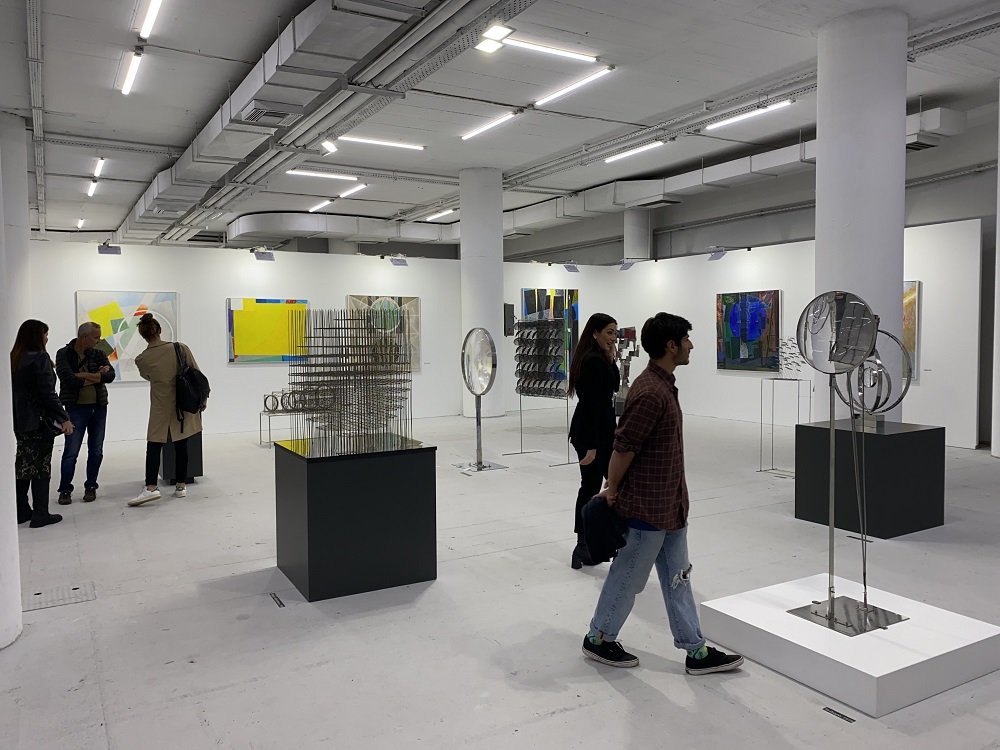
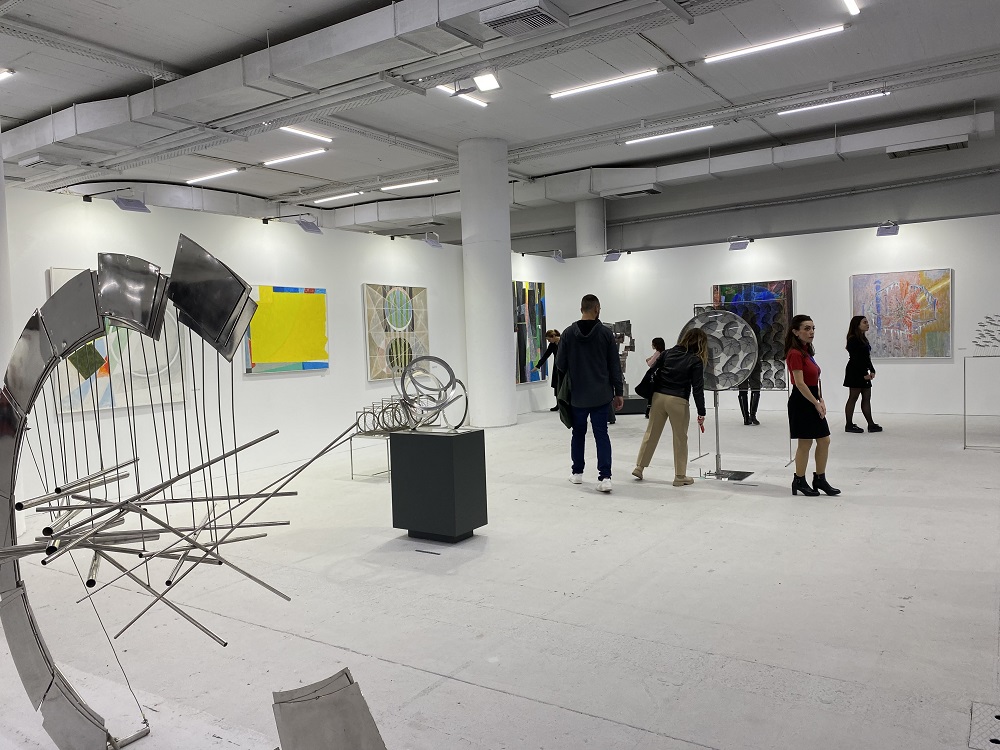



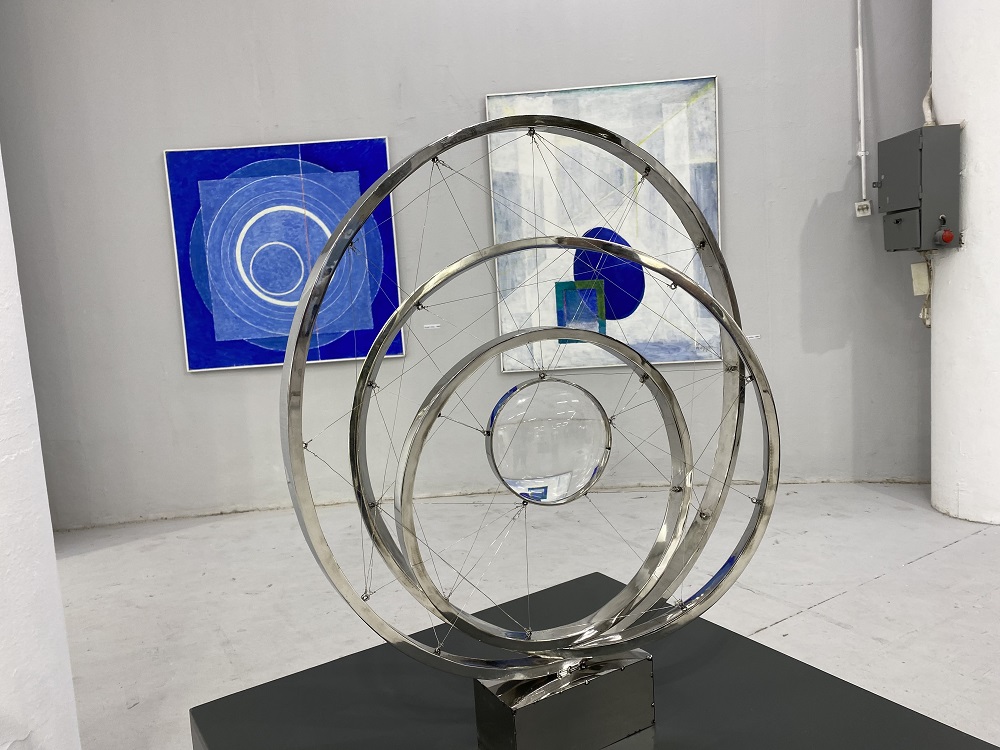
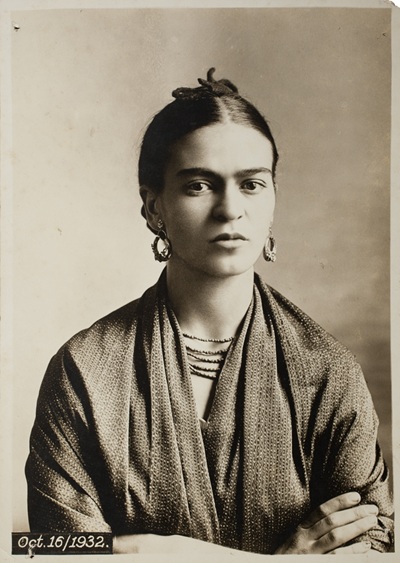

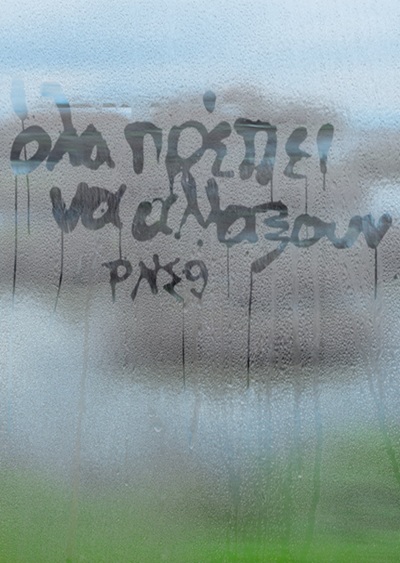



Leave A Comment